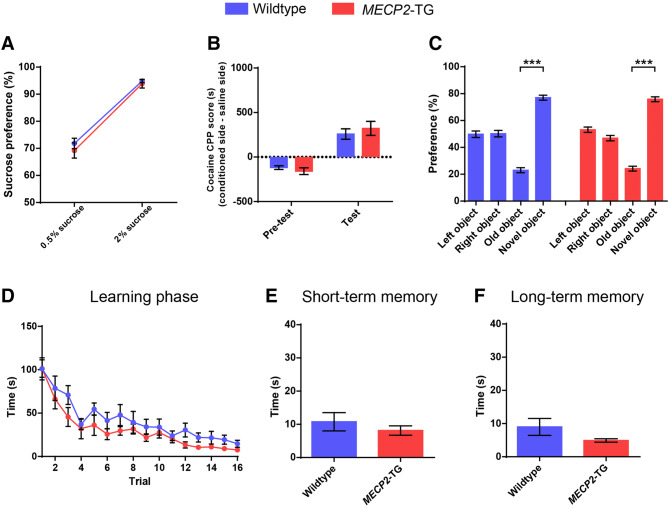Fig. 2.
MECP2-TG mice display normal appetitive behaviors, novel object recognition, and spatial learning and memory. A, BMECP2-TG mice and wild-type littermates showed comparable sucrose preference (A), and cocaine conditioned place preference (B). C In the novel object recognition test, MECP2-TG mice and wild-type littermates showed no side preference during habituation, and normal preference for the novel object in the test phase. D–F No significant difference was found between MECP2-TG mice and wild-type littermates during the learning phase (D), the short-term memory test (E), and the long-term memory test (F) in the Barnes maze test. n = 10–14 for wild-type, n = 10–14 for MECP2-TG. Data represent the mean ± SEM. ***P < 0.001 (two-tailed t-test in A, B, E, and F, two-tailed paired t-test in C, and two-way repeated-measures ANOVA in D).

